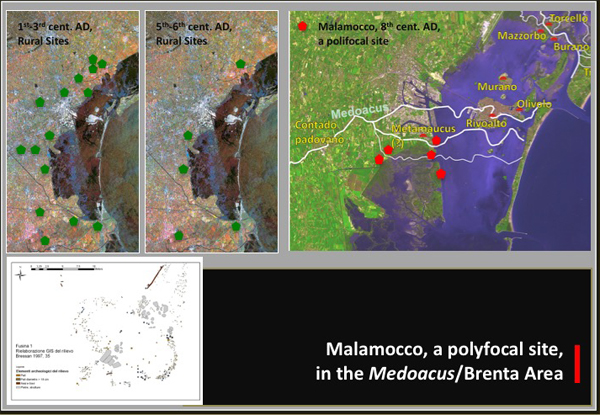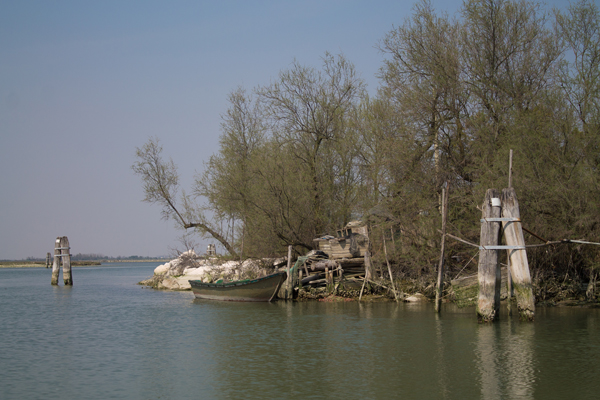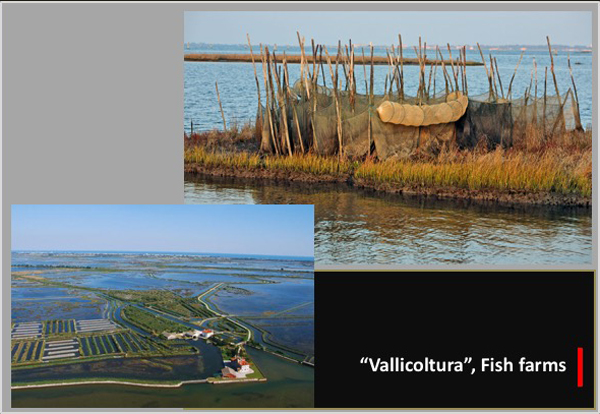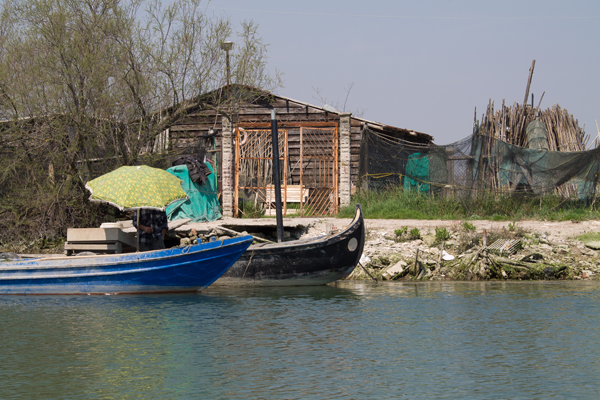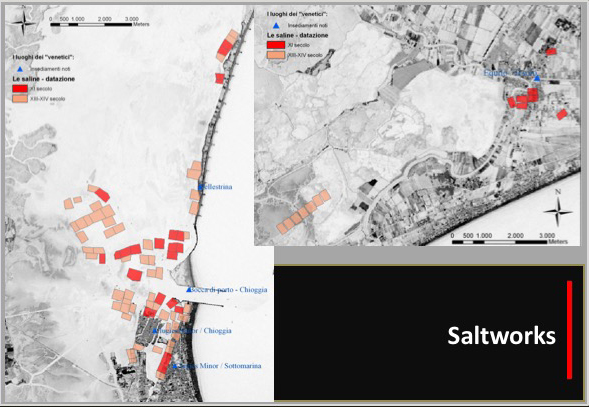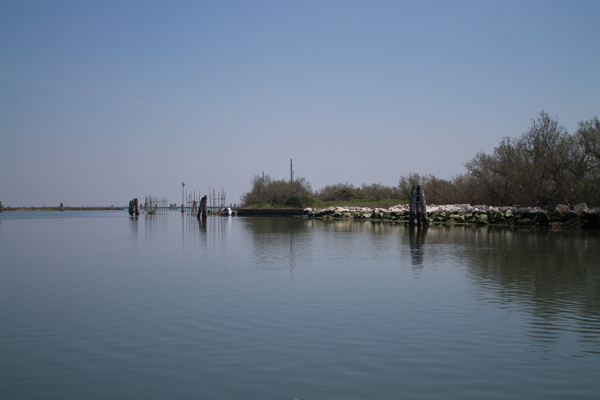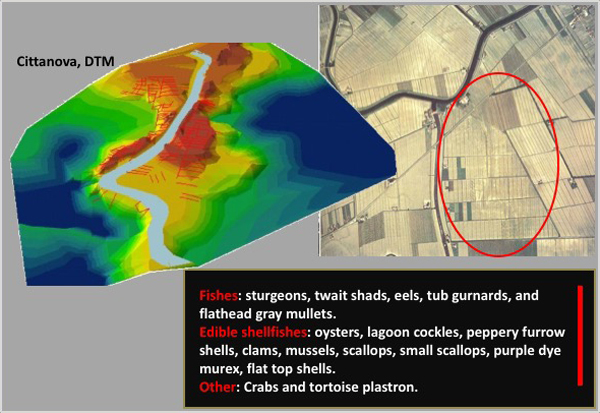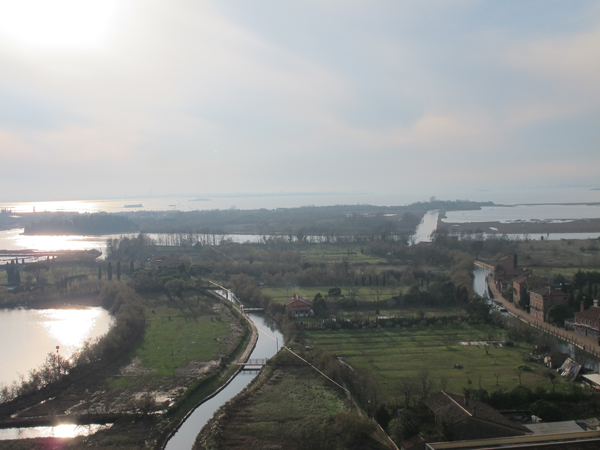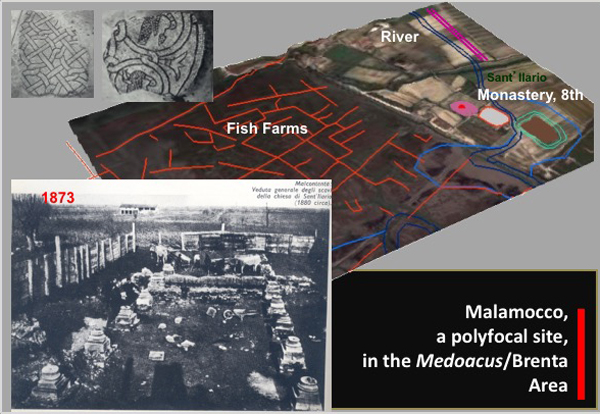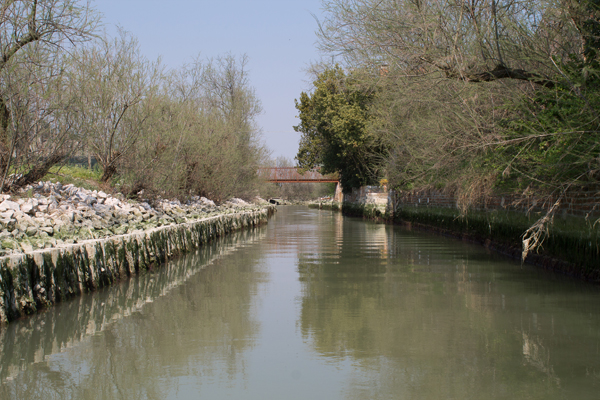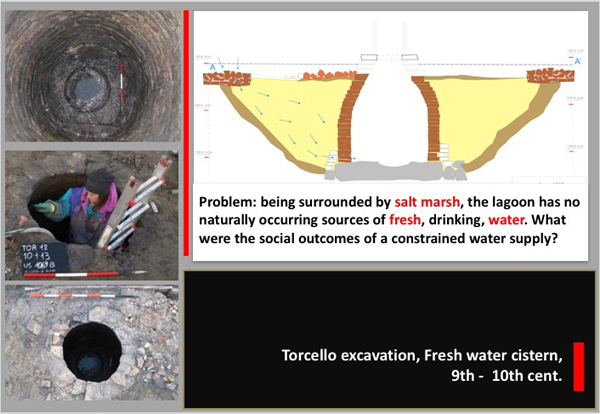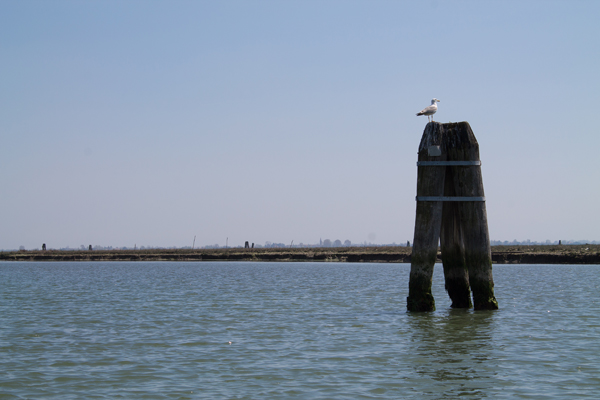Water
The water in the lagoon didn’t constitute an unattractive, insalubrious environment, as described by the legend. Seeking refuge in the lagoon didn’t mean choosing the most remote place to live in. On the contrary, it meant moving to where water facilitated the exchange of goods between the Mediterranean trade routes and the routes up the rivers of the Northern Italian plain. During the last centuries of the Roman Empire in the Po Valley plain interior, the system of cities, the organisation of agriculture and communication routes went into sharp decline. But in the lagoons, archaeological studies document a remarkable flourishing of towns with a notably trading tradition. From south to north, we can cite Comacchio, San Basilio, Cavarzere, Chioggia, Rialto, Olivolo, Malamocco, Torcello, Jesolo, Cittanova, Caorle and Grado. On islands in the river mouths from Ravenna to Aquileia, trading posts were established (warehouses, wharfs and ports) since they could no longer be based in the ancient Roman ports. The previously used canal ports of Padua, Altino and Aquileia had gradually begun to silt up and their connection to the transport system withered. The lively trade on the new islands is documented by amphoras' sherds and large containers used to carry oil, wine, fish sauces and spices. The amphoras came from throughout the Mediterranean and especially the Black Sea, Turkey, Southern Italy and areas in what is now Egypt and Israel. We might describe the new logistics system as "diffuse ports" – an integrated system with a series of small intermediate ports. Sea cargoes were carried by vessels unsuitable for river navigation, since the internal waters required flat-bottomed craft and series of banks for towing vessels by means of draught animals. The overall system was based on various infrastructures – rafts, river ferries and piers – and places to stop over and house the boats, people and animals. Special buildings were required to store foodstuffs and goods temporarily or seasonally. In these “amphibious” places, water renewal was guaranteed by the sea currents, which injected seawater daily. The salt prevented the environment from becoming unhealthy, while the nearby rivers provided a source of fresh water. The surrounding land had large forests rich in timber and wild game. Between the strips of land there were waters with abundant fish, drawn to the changing tides.
Where the salt in the water was more concentrated, salt could be produced. The earliest Venice was built around water. Archaeological studies reveal that there were no bridges, only rafts, walkways and boats. The traffic system was on water. In the 9th and 10th centuries on the island of Torcello, for example, the houses and courtyards all gave onto water (either the lagoon or internal canals) and access was by means of landing stages or banks. Water was not seen as a barrier, but as an easily crossed space joining up the lagoon islands with the whole of the known world. Crossing water was an everyday action in order to move from one island to another or from one house to another. People crossed canals to reach vegetable gardens or to go to church or the graveyard. This water culture led to increasingly refined technology in shipbuilding. Right from the outset, shipbuilding was the secret arm of the Venetici (or Veneti, early inhabitants of northeast Italy): they had an invincible fleet and in case of war in their own shallow waters around the city, the whole population could be enlisted as mariners.
Where the salt in the water was more concentrated, salt could be produced. The earliest Venice was built around water. Archaeological studies reveal that there were no bridges, only rafts, walkways and boats. The traffic system was on water. In the 9th and 10th centuries on the island of Torcello, for example, the houses and courtyards all gave onto water (either the lagoon or internal canals) and access was by means of landing stages or banks.
Water was not seen as a barrier, but as an easily crossed space joining up the lagoon islands with the whole of the known world. Crossing water was an everyday action in order to move from one island to another or from one house to another. People crossed canals to reach vegetable gardens or to go to church or the graveyard. This water culture led to increasingly refined technology in shipbuilding. Right from the outset, shipbuilding was the secret arm of the Venetici (or Veneti, early inhabitants of northeast Italy): they had an invincible fleet and in case of war in their own shallow waters around the city, the whole population could be enlisted as mariners.
Last update: 11/07/2025

